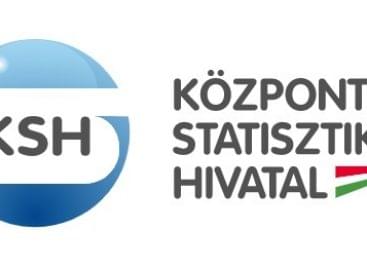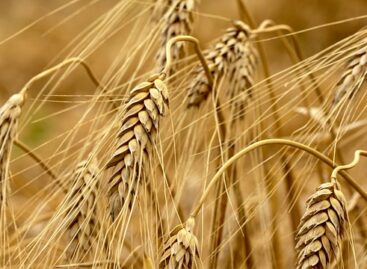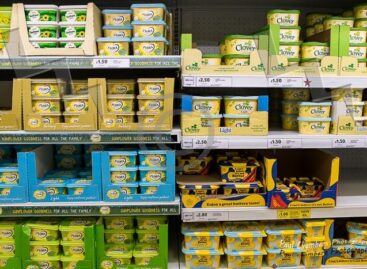Overturned grain market: grain growers are in a difficult situation
In three months, the price of the most important cereals fell by more than 20 percent on the domestic market, so the very unusual situation arose that wheat and corn could be sold much more expensive at the time of harvest than at the beginning of the calendar year. All of this puts many domestic farmers in a difficult situation, as the profitability of grain cultivation may decrease significantly compared to the previous year due to the prolongation of the uncertain market situation, rising grain imports, and significantly higher production costs compared to last year.

(Photo: Pixabay)
At the end of January 2023, the producer price of a ton of edible wheat in Hungary was HUF 103.9 thousand, while feed corn was HUF 101.6 thousand per ton. The former represents a 25 percent and the latter a 22 percent decline compared to the data at the end of October. Moreover, in the first half of February, prices fell even further: in the AKI report, the average price per ton for the week starting February 6 is already under HUF 95,000.
The drop in prices coincided with the mass appearance of Ukrainian grain on the domestic market, but cannot be explained by that alone
After it became clear that there was a sufficient amount of crops available, and despite the war, the grain from Ukraine did not fall significantly from the world market (in addition, due to the more favorable weather, the farmers there achieved better crop averages than in Hungary), prices fell sharply on the world market as well : the March futures of the Paris Commodity Exchange (MATIF) fell by around 18 percent over the last three months for both wheat and corn. In the meantime, the price of fuel and fertilizer did not drop significantly, and labor prices continued to rise. As a result, the production cost of the crop reached double the level of two years ago in many places. Many domestic grain growers previously withheld their crops from the market in the hope of a better price in the future, which now, despite the larger supply, they can only sell with difficulty and much cheaper than expected. In many domestic warehouses, even a part of the 2021 harvest is waiting for sale. If it is not possible to sell the crop in the next one or two months, there is a good chance that this year many farms will decide not to sow grain in the spring, or only in a smaller area, due to a lack of funds and the existing uncertainty.
Part of the picture is that, while the drop in prices is causing serious difficulties for arable crop growers, it has brought some relief to the livestock sector – which was completely devastated by last year’s crop price hike.
“For the actors currently operating on the market, this perhaps never-before-seen situation holds several lessons,” points out Bence Bolyki, managing director of Agroinform.hu. – On the one hand, instead of waiting for the best price and maximizing profit, it is advisable to strive for stable profitability. The other lesson is that in order to share risks, a farm should be present in several sectors at the same time (in addition to arable land, horticulture, animal husbandry, organic crops, etc.). In some of the arable fields, the transition to unique plant cultures that can maintain competitiveness in the longer term should be considered. In addition, the application of precision technologies and the appropriate machine park can greatly promote the maintenance of profitability even at the current level of input prices.
Agroinform
Related news
KSH: Agricultural output in 2024 fell by 8.0 percent compared to the previous year
The total output of agriculture in 2024 amounted to over…
Read more >Animal Processing in 2024: Increasing Pork and Poultry Slaughter, Decreasing Cattle and Sheep Processing
In the first three quarters of 2024, animal processing data…
Read more >Wheat prices are changing dynamically on the market
According to Tallage’s October information, the spot market price of…
Read more >Related news
Plant-based brands risk losing consumer interest, says Flora exec
Flora Food Group marketing director Ian Hepburn has warned that…
Read more >Albertsons Terminates Merger With Kroger
Albertsons has terminated its $25-billion (€23.7 billion) merger agreement with Kroger after…
Read more >Zalando acquires rival About You
Zalando is buying out its German competitor About You. Both…
Read more >







